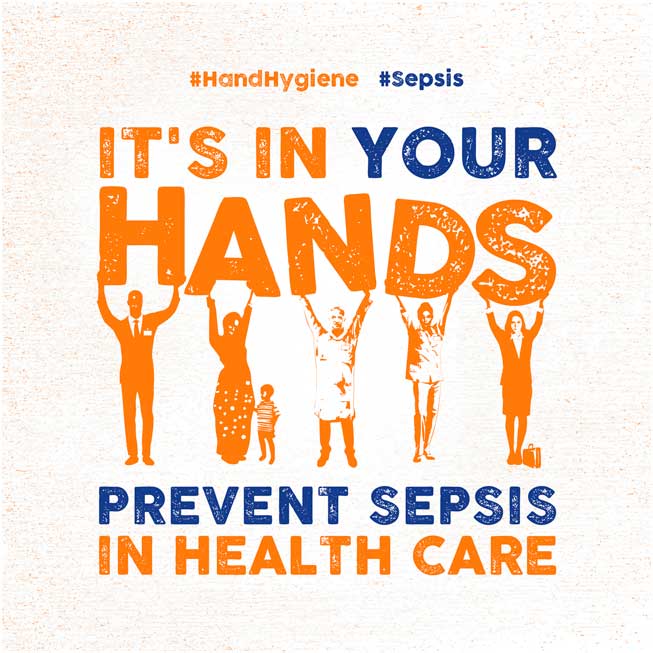To the Editor—Sepsis is a life-threatening organ dysfunction caused by a dysregulated host response to infection.Reference Singer, Deutschman and Seymour 1 It is estimated to affect more than 30 million people worldwide every year with high mortality and morbidity.Reference Fleischmann, Scherag and Adhikari 2 Sepsis was reported as a key global health issue at the 70th World Health Assembly (WHA) in 2017, where a resolution on sepsis was adopted by member states.Reference Rhodes, Evans and Alhazzani 3
Sepsis can result from care practices and complicates healthcare-associated infections. Hand hygiene, a core of infection prevention and control (IPC), plays a critical role in preventing such avoidable events. 4 , 5 Each year, the World Health Organization (WHO) “SAVE LIVES: Clean Your Hands” campaign aims to bring people together in support of hand hygiene improvement globally on or around May 5. 6 In 2018, the campaign focuses on supporting the prevention of sepsis in health care. The WHO urges ministries of health, health facility leaders, IPC leaders, health workers, and patient advocacy groups to take action on hand hygiene to prevent sepsis in health care (Figure 1 and Supplemental Table 1). The WHO also invites health facilities to join the global campaign to demonstrate ongoing commitment to hand hygiene and IPC (http://www.who.int/infection-prevention/campaigns/clean-hands/register/en/).

FIGURE 1 “It’s in your hands—prevent sepsis in health care.” 5 May 2018 World Health Organization (WHO) “SAVE LIVES: Clean Your Hands” campaign slogan and main promotional image (2018 hashtags: #HandHygiene #Sepsis). Campaign participants are invited to submit photos/selfies of them holding a board with the slogan and hashtags at www.CleanHandsSaveLives.org.
Each hand hygiene action contributes to preventing sepsis in health care: Let’s act together, “It’s in Your Hands—Prevent Sepsis in Health Care.”
ACKNOWLEDGMENTS
The authors alone are responsible for the views expressed in this article, and they do not necessarily represent the views, decisions, or policies of the institutions with which they are affiliated.
Financial support: World Health Organization (WHO) and Infection Control Program and WHO Collaborating Centre on Patient Safety (SPCI/WCC), University of Geneva Hospitals and Faculty of Medicine, Geneva, Switzerland. Hand hygiene research activities at the SPCI/WCC are supported by the Swiss National Science Foundation (grant no. 32003B_163262).
Potential conflicts of interest: All authors report no conflicts of interest relevant to this article.
SUPPLEMENTARY MATERIAL
To view supplementary material for this article, please visit https://doi.org/10.1017/ice.2018.68





